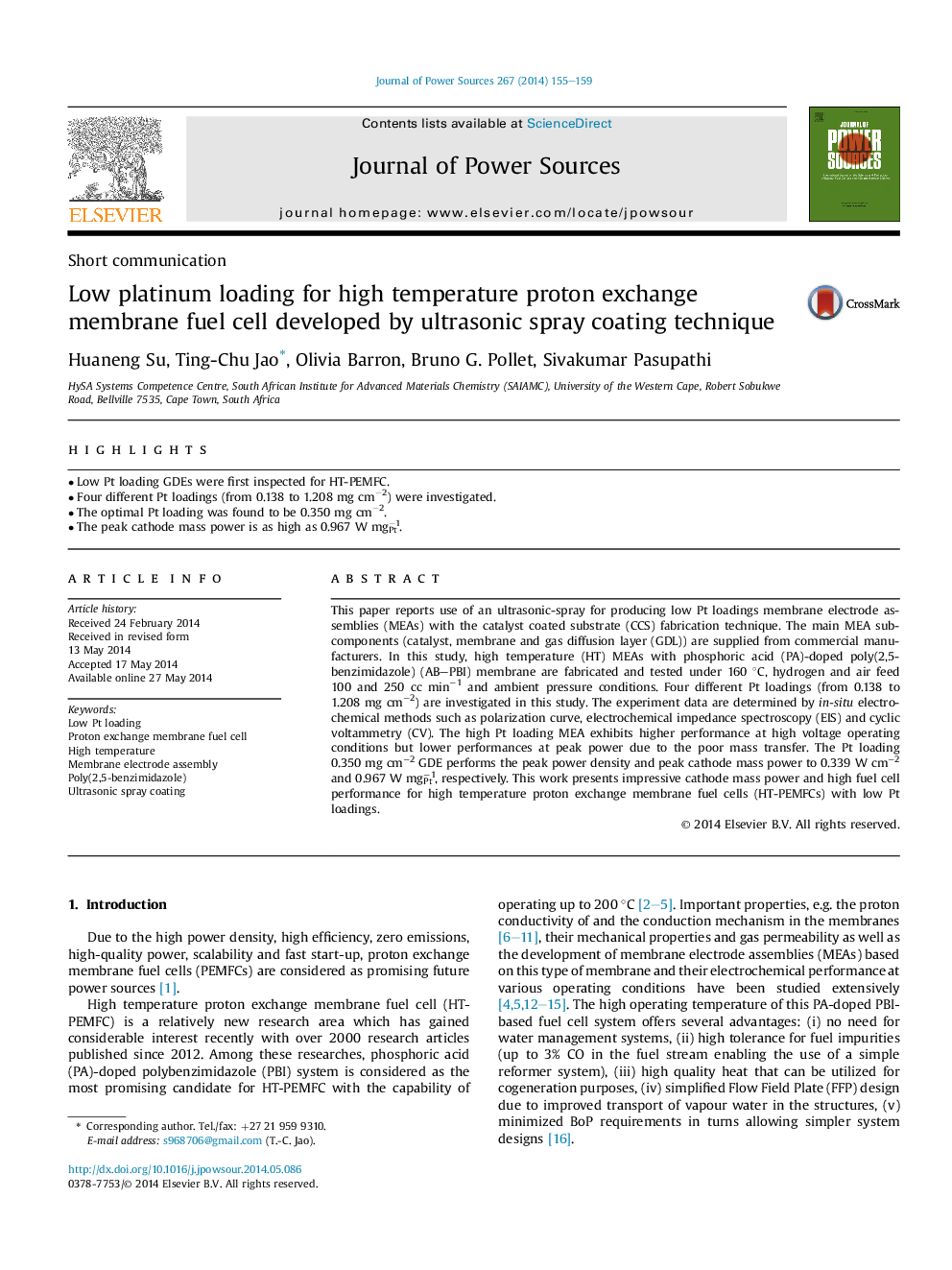| Article ID | Journal | Published Year | Pages | File Type |
|---|---|---|---|---|
| 1286577 | Journal of Power Sources | 2014 | 5 Pages |
•Low Pt loading GDEs were first inspected for HT-PEMFC.•Four different Pt loadings (from 0.138 to 1.208 mg cm−2) were investigated.•The optimal Pt loading was found to be 0.350 mg cm−2.•The peak cathode mass power is as high as 0.967 W mgPt−1.
This paper reports use of an ultrasonic-spray for producing low Pt loadings membrane electrode assemblies (MEAs) with the catalyst coated substrate (CCS) fabrication technique. The main MEA sub-components (catalyst, membrane and gas diffusion layer (GDL)) are supplied from commercial manufacturers. In this study, high temperature (HT) MEAs with phosphoric acid (PA)-doped poly(2,5-benzimidazole) (AB–PBI) membrane are fabricated and tested under 160 °C, hydrogen and air feed 100 and 250 cc min−1 and ambient pressure conditions. Four different Pt loadings (from 0.138 to 1.208 mg cm−2) are investigated in this study. The experiment data are determined by in-situ electrochemical methods such as polarization curve, electrochemical impedance spectroscopy (EIS) and cyclic voltammetry (CV). The high Pt loading MEA exhibits higher performance at high voltage operating conditions but lower performances at peak power due to the poor mass transfer. The Pt loading 0.350 mg cm−2 GDE performs the peak power density and peak cathode mass power to 0.339 W cm−2 and 0.967 W mgPt−1, respectively. This work presents impressive cathode mass power and high fuel cell performance for high temperature proton exchange membrane fuel cells (HT-PEMFCs) with low Pt loadings.
